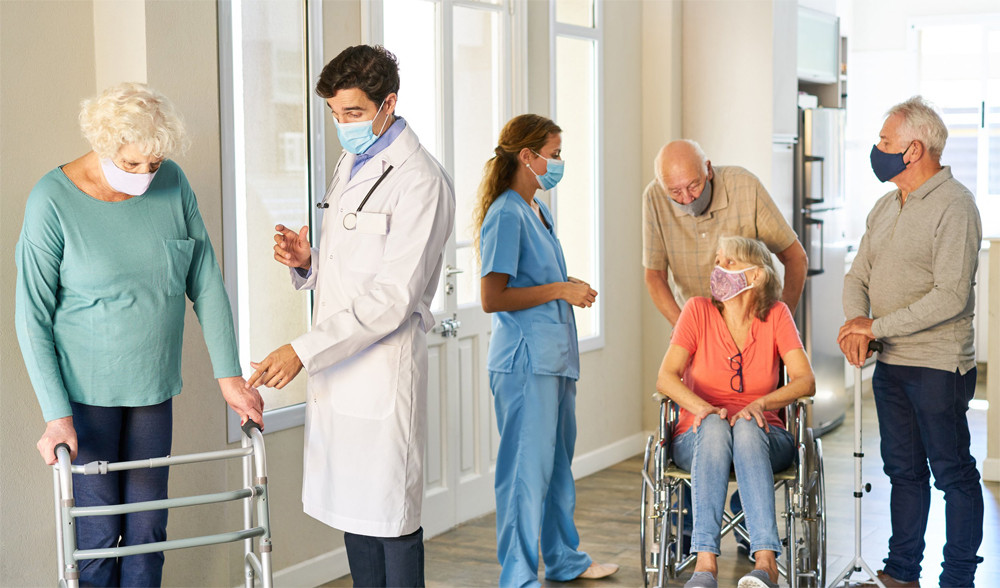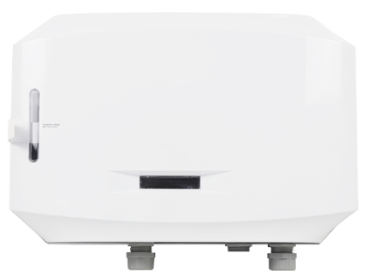
The senior population is experiencing rapid growth in at least seven European nations and the United States, resulting in a significant need for new nursing homes. Presently, there are over 15,000 nursing homes and long-term care facilities in the US that accommodate one million elderly individuals.
The number of patients residing in nursing homes is almost three times greater than the number of those occupying hospital rooms in the previous year. It is the duty of each of these facilities to prioritize the safety and well-being of their residents by ensuring the provision of clean and sanitized towels, bedding, and clothes.
Initially disregarded as a typical cough or breathlessness, the true horror of the COVID-19 virus was revealed early in 2020. It deteriorates respiratory health and severely impacts immune systems. The virus wreaked havoc in nursing homes across the US, resulting in thousands of fatalities.
Between July and August 2020, over 16,800 nursing home occupants and staff members succumbed to COVID-19. These startling and sorrowful figures imply that during that period, an average of over one nursing home resident contracted the virus every minute, and 11 residents died each hour. Would these devastating statistics have been reduced, if not prevented entirely, by implementing improved hygiene and sanitation measures in nursing homes?

The task of maintaining clean laundry in a nursing home is a massive responsibility that involves cleaning and disinfecting bedding and towels in each room, as well as washing the clothing of residents and employee uniforms.
Nursing homes face the challenge of balancing cost-effectiveness and environmental impact with the quality and cleanliness of linens for their residents. Often, they turn to commercial laundry services to manage this task. However, these cleaning businesses experience heightened levels of financial and regulatory pressure as they strive to expand their capacity to meet the increasing demand.
Working with nursing homes that serve elderly individuals presents challenges for commercial laundry services. These include rising costs for hot water washing, managing waste and chemicals, maximizing efficiency per laundry load, and considering the lifetime fabric costs.
Compared to the challenge of ensuring that linens remain virus-free, these concerns pale in comparison. According to a 2011 study by the International Scientific Forum on Home Hygiene (IFH) on the role of laundry in daily life, soiled linens and clothes were found to harbor pathogens and bacteria associated with various illnesses. Linens act as vehicles for carrying and transmitting microorganisms that increase the risk of infectious diseases that harm respiratory health and immune systems.
Since the elderly are the most vulnerable to such illnesses, ensuring sanitized laundry is the primary means of defense against bacteria and viruses, including COVID-19. An Eco Ozone Laundry System serves as the first line of defense in keeping nursing home occupants safe.

In laundry, with the use of ozonated water, an Eco Ozone Laundry System can disinfect clothing and significantly reduces the risk of spreading infectious microorganisms present on soiled and dirty clothing. Employing ozone laundry to sanitize fabric-based cleaning materials results in a minimal survival rate of pathogens on cleaning supplies. Ozone laundry can effectively eliminate dangerous microorganisms and aids in eradicating mildew in washing machines.
The infusion of water electrolytically generates ozone, which does not leave any chemical residue in the washing water or laundry water lines, even in small quantities. This feature makes ozone laundry much safer for the environment when compared to chemical disinfectants like chlorine. In addition, ozone laundry reduces the quantity of laundry detergent required per wash load, necessitating fewer rinse cycles and conserving water.
The responsibility of nursing home employees is to maintain a secure and hygienic living environment for the occupants. The presence of mildew and its accompanying odor is due to bacteria in laundry machines caused by humidity and residual water in the washing machine. Sanitizing washing machines with ozone can eliminate mildew and its odor, resulting in fresher-smelling laundry while deodorizing the machines.
Regardless of whether you wash your laundry in cold water or hot water, there is a high likelihood that bacteria, viruses, and other pathogens that cause infectious diseases will remain on the "clean" linens and clothing. Nursing home residents, many of whom already have weakened immune systems, should not be exposed to unnecessarily high levels of risk when a straightforward and eco-friendly solution is available: the use of ozonated water in an ozone laundry system.

Green Land Yinghai International Building B,
Baohe District, Hefei,
Anhui, China, 230002
© O₃ Eco Laundry 2024 | Sitemap | Privacy Policy | Terms of Service